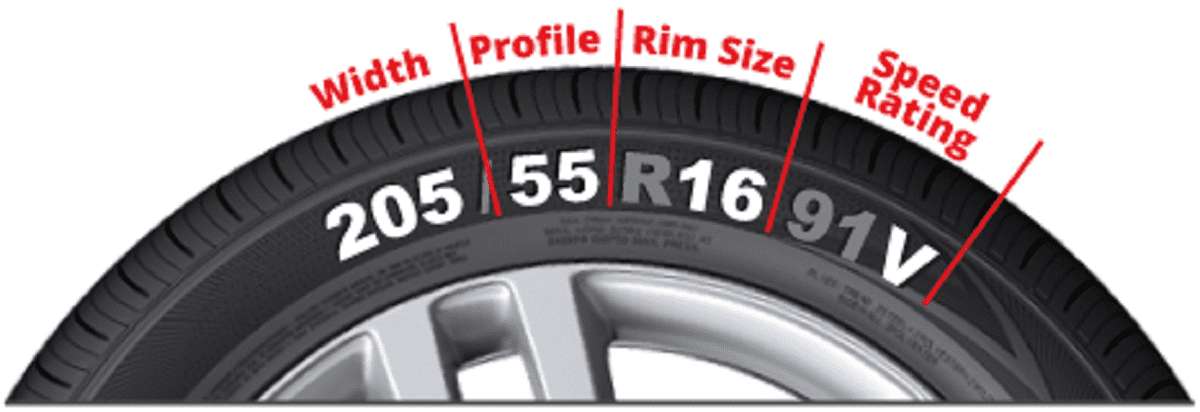One of the first and easiest modifications to a car can be to slap some larger wheels on, but what what affect does it have on acceleration and overall performance?
Remind me later
You see it at every car meet and cruise; VW Golfs and Audi A4s turning up with their arches filled and scraping with wheels four inches larger than stock. Aesthetically, it is completely understandable to want to fill the wheel arches for a more aggressive and hunkered look. Your car can be made to look badass and more compact in side profile. I’ve even seen 19-inch Lamborghini wheels crammed into a Scirocco’s arches. But how does a big set of wheels affect your car in terms of performance? Are you needlessly sapping the life out of your 0-60 time and your handling?
To start off with, let’s look at the simple fundamentals of wheel dynamics. To get a wheel spinning, you need to apply a torque through its axis. This torque value can be calculated using the radius of the wheel and the tangential force produced by the wheel.
We can treat the torque value as a constant (assuming your engine produces a stable torque figure) which therefore means that if the wheel radius changes, the driving force acting from the wheel must also change.
So let’s say you start off with a 15-inch wheel on your 1.6-litre VW Golf GTI which produces a maximum torque output of 350 Nm. Assuming that the torque is split between the two wheels (175 Nm each) and discounting drive ratios so that all the engine’s torque makes it to the wheels, the force can be calculated to be around 460 Newtons. Now, increase that wheel diameter to a set of 19-inch Need for Speed style, fake diamond cut rims from your local Halfords. Run the calculation through again and that driving force will decrease to 360 Newtons.
Newton’s Second Law dictates that the force on an object is equal to its mass multiplied by its acceleration.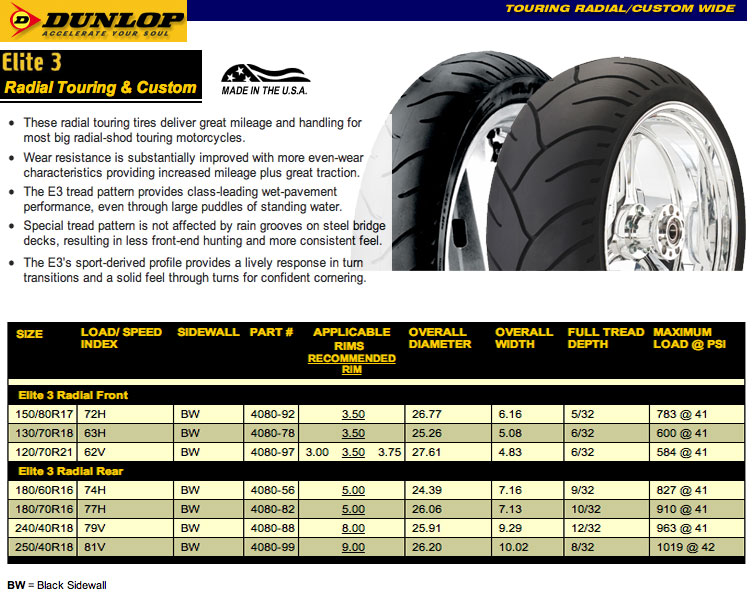 So, increasing your wheel size will decrease the driving force from your wheels which will culminate in a decrease in acceleration of said wheels.
So, increasing your wheel size will decrease the driving force from your wheels which will culminate in a decrease in acceleration of said wheels.
To summarise, a car’s engine finds it more difficult to rotate larger wheels, making for a decrease in overall acceleration. This is all assuming that every other component like the engine, driveshafts, gears and differentials are kept stock, making them specifically engineered for the original wheel size. Fuel economy will inevitably suffer as well due to the engine having to work harder to rotate the wheels, but I’d imagine that’s the least of worries for the generic modifier.
Car and Driver ran an interesting test a few years ago to show just how much difference wheel sizes can make to acceleration using a VW Golf. The car was tested with varying wheel sizes, with the 0-60mph times ranging from 7.6 seconds for the smallest wheel size (15-inch) and 7.9 seconds for the 19-inch option. That lag in time was emphasised with the 0-100mph times as well, with the large-wheeled car taking over a second longer than the 15-inch variant.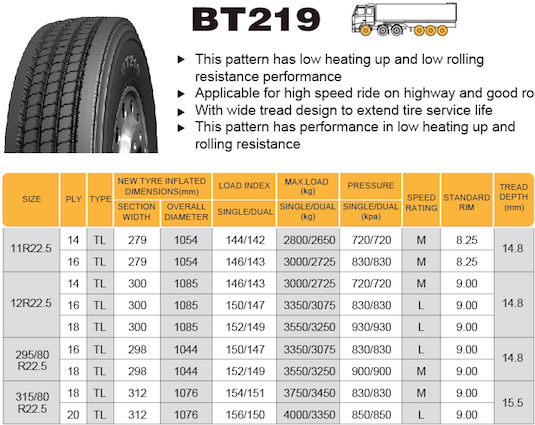
Another area affected by wheel diameter is the tyre that has to be mounted to it. Since the speedometer and gearing are finely tuned to the entire diameter of the alloy and tyre combined, as wheel size increases, the profile of the tyre must decrease to not mess this calibration around. This therefore means that the sidewalls of the tyre have to be stronger to withstand the lateral forces applied through cornering, decreasing ride comfort and feedback to the driver.
But it’s not all bad. Increasing wheel diameter normally means increasing its width as well, making the contact patch between tyre and road larger, hence increasing grip. On that note, you should really stiffen your suspension along with increasing tyre width as body roll will increase substantially if the car is able to dig much harder into corners due to the added friction leading to corner stability.
Differences in handling will also vary with wheel size.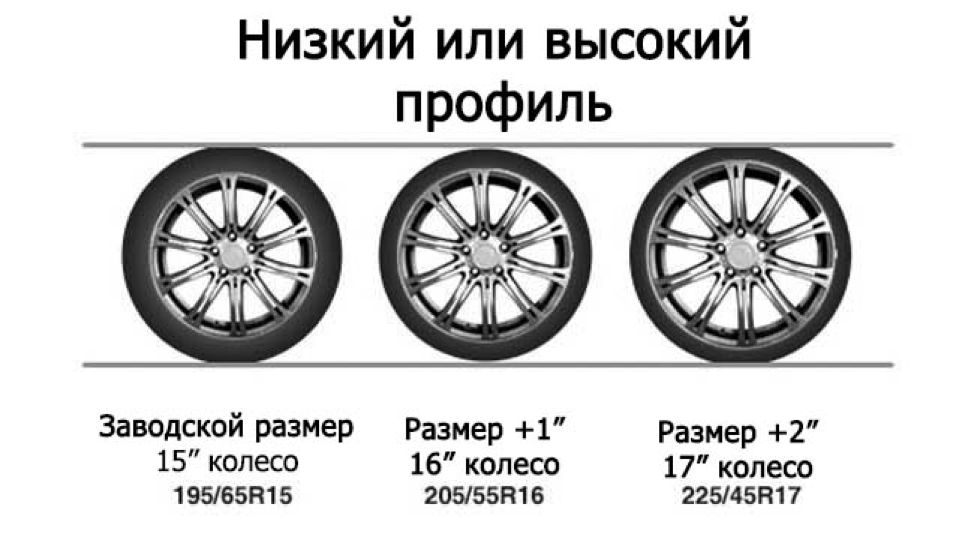 Smaller diameter wheels will make for more concise handling as each rotation of the wheel covers a shorter distance, meaning more acute adjustments can be made during cornering compared to a larger diameter tyre, which will try to push further on into the corner and provoke understeer. On the contrary, the increase in grip for the larger, wider wheels will culminate in faster and more composed handling as stated above.
Smaller diameter wheels will make for more concise handling as each rotation of the wheel covers a shorter distance, meaning more acute adjustments can be made during cornering compared to a larger diameter tyre, which will try to push further on into the corner and provoke understeer. On the contrary, the increase in grip for the larger, wider wheels will culminate in faster and more composed handling as stated above.
So the real question is, do you go for aesthetics or performance? Comment below, we’re interested to see what you all think!
‹ Tips & Guides home
‹ Tips & Guides home Wheels | For a lot of us, when we get a new car or truck, the first thing we want to do is make it our own. The instinct to add our own personal touch to things will never go away. We see something, no matter how cool or practical, and want to change something about it to let the world know it’s ours, and why not? When it comes to cars, the first thing that most people want to change is the wheels. It’s an easy way to customize any car or truck and make it look special and uniquely yours. Something to consider, though, before changing your wheels is how your car’s wheel size affects its performance. The look and style are important, but if you care about efficiency and power, then read on and educate yourself. First, we are using the term “wheel” on purpose to refer to all the components of this crucial part of your car, from the alloy rim to the tire, and all its features in terms of thickness, sidewall, tread, and so on. When trying to pick out a tire size for your car, it’s important to know what you’re buying. Every style of tire has a series of numbers attached to them. Those numbers tell you three distinct facts, and they all have to do size.
The instinct to add our own personal touch to things will never go away. We see something, no matter how cool or practical, and want to change something about it to let the world know it’s ours, and why not? When it comes to cars, the first thing that most people want to change is the wheels. It’s an easy way to customize any car or truck and make it look special and uniquely yours. Something to consider, though, before changing your wheels is how your car’s wheel size affects its performance. The look and style are important, but if you care about efficiency and power, then read on and educate yourself. First, we are using the term “wheel” on purpose to refer to all the components of this crucial part of your car, from the alloy rim to the tire, and all its features in terms of thickness, sidewall, tread, and so on. When trying to pick out a tire size for your car, it’s important to know what you’re buying. Every style of tire has a series of numbers attached to them. Those numbers tell you three distinct facts, and they all have to do size. Pirelli used this formula, 185/55 R15, for one of its tires. The first number, 185, is the width of the tire in millimeters. The second, 55, is the sidewall height, also in millimeters. The final number, R15, means the tire is a radial (R), and it’s 15 inches in diameter. That formula can be applied to almost every brand of tire. When designing a car, engineers work closely with tire manufacturers to determine what sizes can be fitted on a given vehicle and adjust the transmission ratio accordingly. By way of comparison, we can consider the total wheel diameter as the length of the final reduction ratio of the transmission. Increasing the wheel diameter will also increase the final reduction ratio, which has two consequences: acceleration potential is decreased, but a higher top speed is reached. In other words, the bigger the tires on a car, the slower it will accelerate, but it will have higher top speeds. Naturally, these changes are proportional to the variation of size. The consequences of a few millimeters of difference may be undetectable, but more radical changes may cause more obvious variations.
Pirelli used this formula, 185/55 R15, for one of its tires. The first number, 185, is the width of the tire in millimeters. The second, 55, is the sidewall height, also in millimeters. The final number, R15, means the tire is a radial (R), and it’s 15 inches in diameter. That formula can be applied to almost every brand of tire. When designing a car, engineers work closely with tire manufacturers to determine what sizes can be fitted on a given vehicle and adjust the transmission ratio accordingly. By way of comparison, we can consider the total wheel diameter as the length of the final reduction ratio of the transmission. Increasing the wheel diameter will also increase the final reduction ratio, which has two consequences: acceleration potential is decreased, but a higher top speed is reached. In other words, the bigger the tires on a car, the slower it will accelerate, but it will have higher top speeds. Naturally, these changes are proportional to the variation of size. The consequences of a few millimeters of difference may be undetectable, but more radical changes may cause more obvious variations. There is another element to take into consideration: increasing the wheel diameter will also increase the axle weight as a whole. This will increase inertia, cause further loss of acceleration, and also lower cornering accuracy. The behavior of the car may also change; increasing the tire diameter will obviously raise the chassis height and the center of gravity as a consequence, with the direct effect of increasing roll and oscillations. The car will handle differently and potentially become more cumbersome, handling like a dump truck instead of a sports car. There are consequences to increasing the tread width. A larger wheel width will increase friction between the wheel and the road. A positive effect of this is an increase in road holding and shorter stop distances. But rolling resistance also increases at the same time, making the engine work harder to move the vehicle and burn more fuel. Lastly, it is worth mentioning that wheel size will influence the speedometer readout because it is set and type-approved for original equipment tires.
There is another element to take into consideration: increasing the wheel diameter will also increase the axle weight as a whole. This will increase inertia, cause further loss of acceleration, and also lower cornering accuracy. The behavior of the car may also change; increasing the tire diameter will obviously raise the chassis height and the center of gravity as a consequence, with the direct effect of increasing roll and oscillations. The car will handle differently and potentially become more cumbersome, handling like a dump truck instead of a sports car. There are consequences to increasing the tread width. A larger wheel width will increase friction between the wheel and the road. A positive effect of this is an increase in road holding and shorter stop distances. But rolling resistance also increases at the same time, making the engine work harder to move the vehicle and burn more fuel. Lastly, it is worth mentioning that wheel size will influence the speedometer readout because it is set and type-approved for original equipment tires. Changing the wheel size will make your speedometer less accurate. It’s better to know that going in so a police officer doesn’t give you a $150 reminder. We have a huge selection of new tires in Sumter, SC, for every make and model on the road. Drive in today!
Changing the wheel size will make your speedometer less accurate. It’s better to know that going in so a police officer doesn’t give you a $150 reminder. We have a huge selection of new tires in Sumter, SC, for every make and model on the road. Drive in today!
An important condition for the operation of any vehicle is compliance with the standards regulated by the manufacturer and tires in this matter do not stand aside. Any change in diameter will not pass without a trace. The larger diameter not only leads to a change in braking performance, but also affects traction performance, the problem of protecting the environment by increasing exhaust gas emissions and, of course, affects the dynamics of the car. To have a better idea of the huge range of tires entering the Russian market, you should go to the site http://www.aport.ru/shiny_r15/ccid673, where you can compare prices for your favorite models. nine0003
nine0003
In order to correctly answer this question, just look at the comparative data of experienced motorists, which are presented below.
Original size 185/60/14.
Here are the indicators, if you put 195/60/14, and here is the difference:0003
See below for how the speed will change as the disc diameter changes.
185/60/14__________________185/60/15
40________________________41,7
50________________________52,2
60________________________62,6
70________________________73
80________________________83,5
90________________________93,9
100_______________________104,3
110_______________________114,8
120_____________________125.2
As can be seen from the data in the table, an increase in the disc diameter gives an increase in vehicle speed of approximately 4.5%.
Important: Tire size affects more than just speed.
If the width of the tire profile changes, the fuel consumption will increase, because the weight of the tires will increase significantly. The engine will need more power as the vehicle accelerates. In addition to the increased mass of the tyre, the noise in the passenger compartment often increases, and the resulting rolling resistance leads to increased fuel consumption. nine0003
Appropriate tread pattern on a wide profile rubber is a good option when it comes to operation on loose snow and primer. On asphalt and in ice, they will slide heavily, creating emergency situations. For these conditions, narrow tires are better suited. The pressure on the roadway will be higher and the footprint will be smaller. It should be noted that manufacturers, nevertheless, do not recommend installing wide tires in winter, as this significantly reduces braking performance. nine0003
Attention! All manufacturers of passenger cars and trucks program the car's dashboard for certain preset values, one of them is a specific tire size, so an arbitrary change in tire size will result in false readings on the speedometer, stabilization system, and other electronic devices. The ideal solution to this problem is to calibrate the speedometer after installing non-standard tires or wheels.
The ideal solution to this problem is to calibrate the speedometer after installing non-standard tires or wheels.
Recently, serious disputes have flared up in the world of motorists, what affects the speed and fuel consumption in a car more?! The first half believes that this is the wheel diameter, the second are of the opinion that the profile width has a direct impact on these indicators. nine0003
On a car with a larger wheel diameter, the motor will need an order of magnitude more effort to start moving. Starting acceleration will require more gasoline consumption, while the speed, as shown in the table, will increase by 5% at best. It is not surprising that determining the exact flow rate is problematic, since this indicator, in addition to the diameter of the disk, determines other factors. In many ways, the supporters of this version are right, since they believe that the increase in consumption largely determines the dynamics of movement. At lower speeds, the difference in consumption will be almost imperceptible, and during acceleration, the “gluttony” of the car will increase significantly. nine0003
nine0003
The tire width according to the comparison table has very little effect on speed, unlike the rim diameter. But the height of the profile can play a trick on the motorist and reduce all attempts to save money to zero if the updated tire becomes higher than the previous one.
How difficult it is to find the "golden" mean, especially when the choice is just over the top and each manufacturer assures that its products will not let you down. Even experienced motorists cannot always competently understand this issue, what can we say about inexperienced motorists. It is necessary to understand perfectly that the safety of you and your loved ones will depend on the right choice.0003
Introduce friends to the following that you choose at the dealership as an additional wheel option for your new car.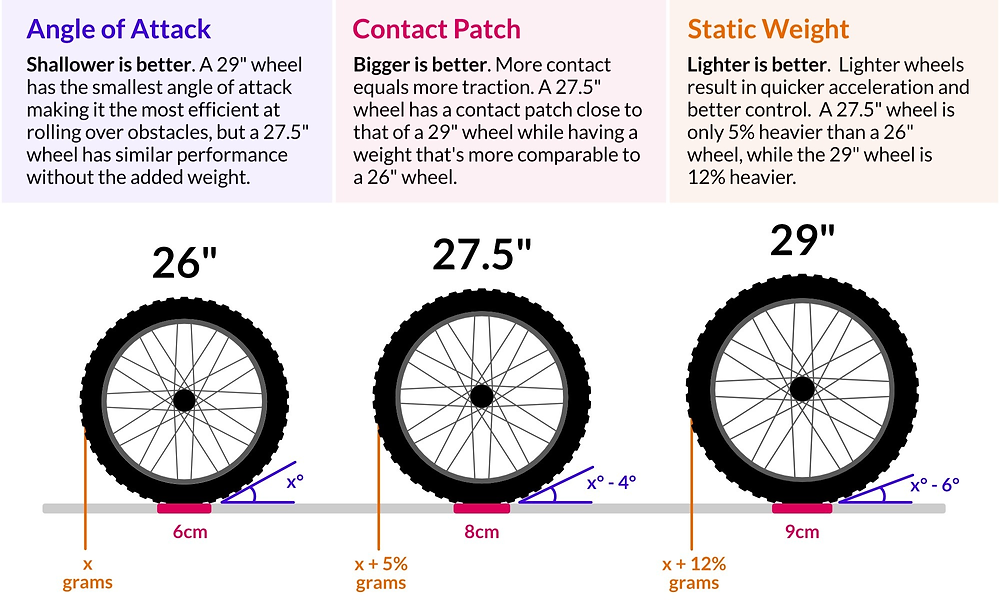 And so, you have the opportunity to choose 17-inch, 18-inch and 19-inch wheels. What will you choose?
And so, you have the opportunity to choose 17-inch, 18-inch and 19-inch wheels. What will you choose?
See further: Why do wheels rotate in the opposite direction when they rotate at a certain speed?
We want to warn you, do not rush to choose. This is a very important decision for you, since the size of the wheels will directly affect not only the performance of the car, but also the comfort and noise level in your car.
Unfortunately, with the dilemma of which car to buy, as a rule, there is another problem associated with the wheels. We cannot test drive a car with different wheel diameters. Namely, before the purchase itself, we will not be able to determine in advance with which wheels the car will best behave on the road. nine0003
In order for each of us to understand how different wheel sizes affect handling, comfort, economy, smoothness, etc., the authors of the British site "Tire Review" conducted their interesting tests of different wheels with different diameters.
For this test, they took a Volkswagen Golf GTI and tested it on wheels of different diameters. The test took place on the Goodyear test track in the south of France.
To make the wheel comparison fair, the experts used "Goodyear Eagle F1 Asymmetric 3" tires in three different diameters, ie 17", 18" and 19" rims.
The car then passed six different tests on each type of wheel on the test track.
Detailed test results can be viewed on their own website right here.
Below, here you can watch a video clip with the details of an unusual test of different wheel sizes that were installed on one of the cars. nine0003
It should be noted right away that according to the results of the tests, both on wet and dry pavement, the car showed excellent results on all wheel sizes. According to experts, all three types of wheels showed excellent results in the test for aqua-planing and braking on different types of asphalt, and so on. coatings.
coatings.
Which wheels are better: steel or light alloy?
In the end, the experts found that the difference in the use of different wheel diameters is noticeable only with a particular handling and power of the car. But only a professional can notice this. nine0003
And so, gentlemen, what kind of wheels should you choose: larger or smaller diameter?
Based on this test, we determined that everything naturally depends on what you yourself want. For example, in what conditions will you most often operate your car. If you do not live in a city, but in a region where roads are not so good and various kinds of precipitation fall more often, then, as experts advise, it is best to take 17-inch wheels, which, during testing on a Volkswagen Golf GTI car, were shown on a wet asphalt more predictable handling behavior. nine0003
nine0003
With smaller wheels, these tests have shown that the driver experiences better comfort while driving, since the height of the tires itself serves as a specific addition to the performance of the car's suspension. True, there is a small but, experts noted, an increase in the softness of the suspension slightly reduces the very stability of the car at speed.
In contrast, 19" wheels and 19" tires make the car's suspension stiffer compared to 17" wheels, and as a result, the car feels a significant reduction in driving comfort. nine0003
As far as noise is concerned, the winner is the 18-inch wheels, which during testing proved to be the quietest of all the other wheels tested.
In the end, after testing all wheel sizes, the experts agreed that the ideal purchase would be 18-inch wheels, which have advantages over 17 and 19-inch wheels.
See also: Large rims and tires: Pros and cons
As you and I have established and verified with the help of experts, 18-inch wheels and tires offer us motorists the best compromise between ride, handling and noise.